An amazing variety of coral and sponges form the backdrop to diving in Belize (and other places). Some of them might look like the equivalent of plants on land, but they're actually animals.

Corals are colonies of invertebrate polyps. A given coral colony consists of "clones" growing as the polyps reproduce asexually. Corals also reproduce sexually, releasing gametes into the water to establish new colonies. It's a bit similar to how groups of aspen trees consists of asexually produced clones, but they also sexually reproduce via seeds. Except that corals also have a "coenosarc" a living tissue that is shared by the whole colony. And to complicate things further, corals actually get most of their energy and nutrients from single celled half animal half plan dinoflagellates that live inside coral. Coral bleaching results from the loss of these symbionts.
When people think about coral and coral reefs they are thinking about hard or stony corals. These corals build up a "skeleton" of calcium carbonate (like shells). These are the corals that gradually build up reefs. But there are also soft corals that don't have a rigid skeletons.


Some of the corals make great abstract patterns. It's hard to reconcile this with idea of them being a colony.

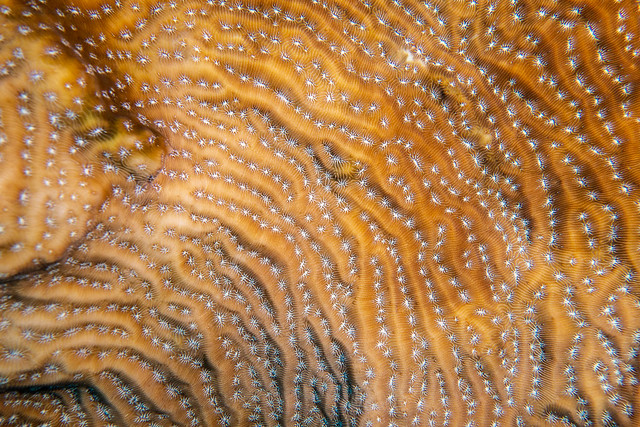
Photographs are great for viewing the details of the corals that are often hard to see while you're diving.


Some of them do look more like colonies.
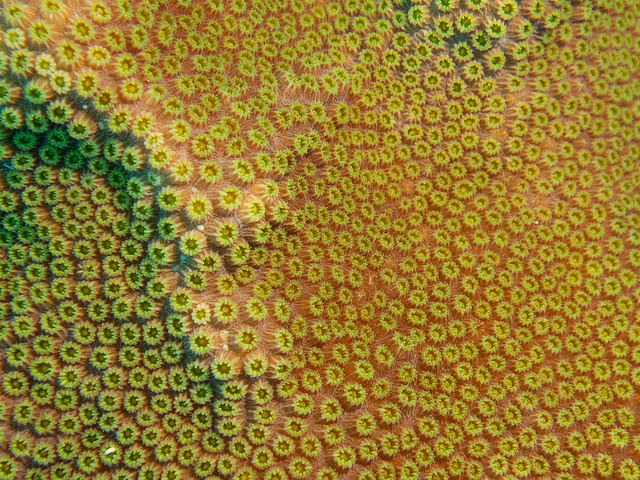
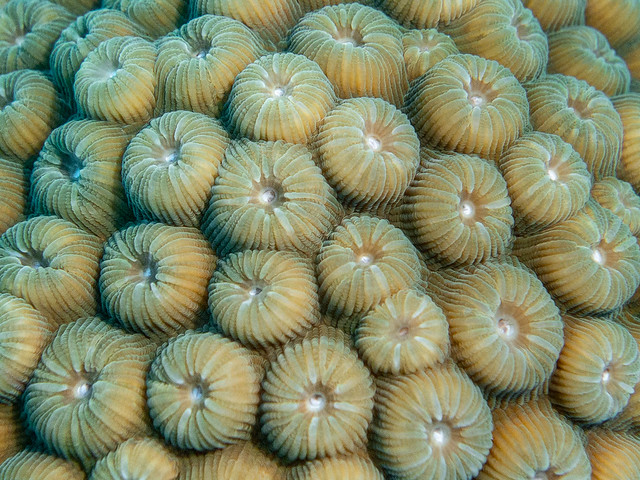
Especially when there's a bit of a current, the polyps will be open and feeding.

Some of the corals form "plates" (these were dinner plate size)

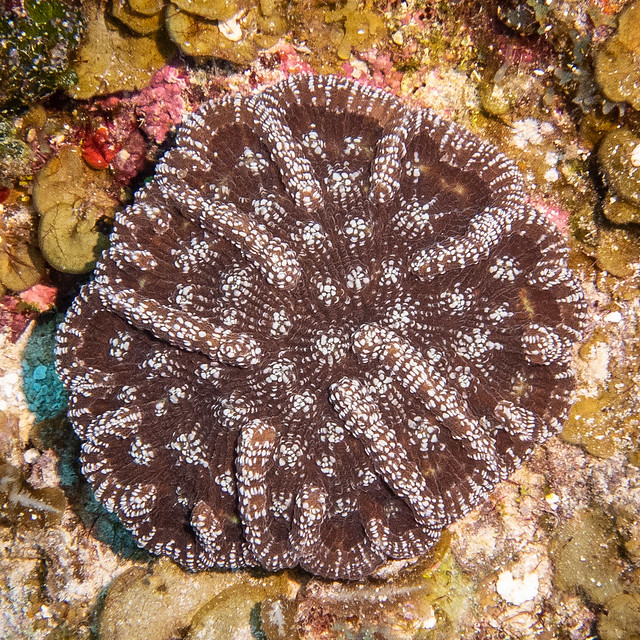
Some of the names don't make a lot of sense to me. Spiny flower coral don't look spiny:

And smooth flower coral don't look smooth. (I keep thinking I must have the names backwards, but I don't think so.)

This one does look a bit like lettuce:
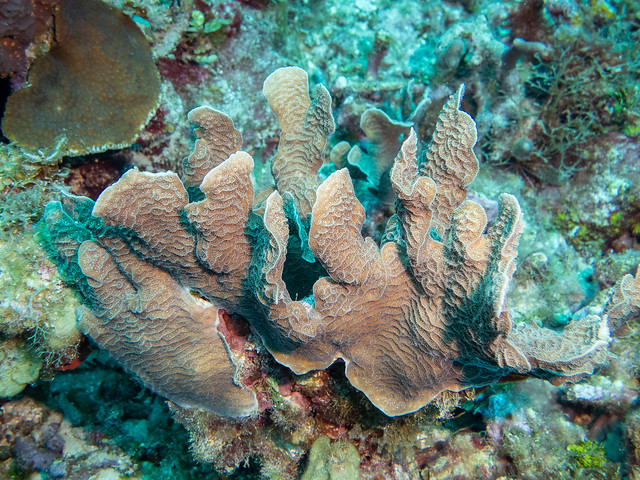
Sponges are also animals (as opposed to plants) but they are single organisms, not colonies like coral. Sponges were the first to branch off the evolutionary tree from the common ancestor of all animals. They are quite "primitive" and do not have nervous, digestive or circulatory systems.
My identification of corals and sponges is even sketchier than my fish ids. Corrections are welcome. I think this is an orange icing sponge and a coral. But I'm not sure if the sponge is growing on the coral, or the coral is growing on the sponge.



I love the variety of colors of the sponges.

These were mostly watermelon size, but some of the big barrel sponges were huge - six feet high and as big across.


Who needs science fiction aliens when you've got real life creatures like these!

I think this next one is the dead "skeleton" of a sponge

Most of the sponges didn't have the intricate detail of the corals, but a few came close

See all 37 photos in this album
See also: Belize Diving - small stuff and Belize Diving - fish

Corals are colonies of invertebrate polyps. A given coral colony consists of "clones" growing as the polyps reproduce asexually. Corals also reproduce sexually, releasing gametes into the water to establish new colonies. It's a bit similar to how groups of aspen trees consists of asexually produced clones, but they also sexually reproduce via seeds. Except that corals also have a "coenosarc" a living tissue that is shared by the whole colony. And to complicate things further, corals actually get most of their energy and nutrients from single celled half animal half plan dinoflagellates that live inside coral. Coral bleaching results from the loss of these symbionts.
When people think about coral and coral reefs they are thinking about hard or stony corals. These corals build up a "skeleton" of calcium carbonate (like shells). These are the corals that gradually build up reefs. But there are also soft corals that don't have a rigid skeletons.


Some of the corals make great abstract patterns. It's hard to reconcile this with idea of them being a colony.


Photographs are great for viewing the details of the corals that are often hard to see while you're diving.


Some of them do look more like colonies.


Especially when there's a bit of a current, the polyps will be open and feeding.

Some of the corals form "plates" (these were dinner plate size)


Some of the names don't make a lot of sense to me. Spiny flower coral don't look spiny:

And smooth flower coral don't look smooth. (I keep thinking I must have the names backwards, but I don't think so.)

This one does look a bit like lettuce:

Sponges are also animals (as opposed to plants) but they are single organisms, not colonies like coral. Sponges were the first to branch off the evolutionary tree from the common ancestor of all animals. They are quite "primitive" and do not have nervous, digestive or circulatory systems.
My identification of corals and sponges is even sketchier than my fish ids. Corrections are welcome. I think this is an orange icing sponge and a coral. But I'm not sure if the sponge is growing on the coral, or the coral is growing on the sponge.



I love the variety of colors of the sponges.

These were mostly watermelon size, but some of the big barrel sponges were huge - six feet high and as big across.


Who needs science fiction aliens when you've got real life creatures like these!

I think this next one is the dead "skeleton" of a sponge

Most of the sponges didn't have the intricate detail of the corals, but a few came close

See all 37 photos in this album
See also: Belize Diving - small stuff and Belize Diving - fish
No comments:
Post a Comment